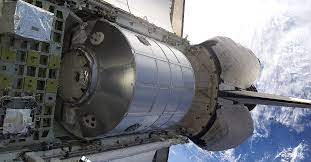Italy proposes minimalist lunar outpost for Artemis

Rome: When humanity first step foot on the Moon, they couldn’t stay around for very long. The Apollo program was limited by the technology of the era — given the incredible cost per kilogram to put a payload down on the lunar surface, it wasn’t feasible to bring down enough consumables for a lengthy stay.
Even if they could have carried sufficient food and water to last more than a few days, the limiting factor would have become how long the crew could realistically remain cooped up in the tiny Lunar Excursion Module (LEM).
In comparison, the Artemis program is far more ambitious. NASA wants to establish a long-term, and perhaps even permanent, human presence on our nearest celestial neighbor. This will be made possible, at least in part, to the greatly reduced launch costs offered by current and near-future launch vehicles compared to legacy platforms like the Saturn V or Space Shuttle. But cheaper rides to space is only part of the equation. NASA will also be leaning heavily on the lessons learned during the International Space Program; namely, the advantages of modular design and international cooperation.

While NASA and their commercial partners will still end up providing the bulk of the hardware for the Artemis program, many modules and components are being provided by other countries. From the Orion’s European Service Module (ESM) to the Japanese life support systems to be installed on the Lunar Gateway Station, America won’t be going to the Moon alone this time.
The latest international contribution to the Artemis program comes from the Italian Space Agency (ASI), who have announced their intention to develop a lunar habitation module they’re calling the Multi-Purpose Habitat (MPH) in collaboration with Thales Alenia Space.
To date most of the attention has been put on the parts of the Artemis project that will actually get astronauts to the Moon, and eventually, down to the surface. The uncrewed Artemis I, which launched just over a year ago, served as a shakedown for both the Space Launch System (SLS) rocket and Orion spacecraft. Artemis II, currently slated for November 2024, will be a similar mission, but this time with humans aboard. Astronauts won’t actually descend to the lunar surface until Artemis III, which current estimates place somewhere between 2025 and 2027.
Once all the elements of Artemis have been demonstrated, the idea is then to start making regular flights to the Moon. Yearly at first, and then with higher cadence as more of the infrastructure comes online. It’s around this point in the plan that the Multi-Purpose Habitat comes into play.
While in general the lunar landers proposed for the Artemis program are quite a bit larger than the Apollo LEM, there will still be a need for dedicated living and working space on the surface. With its own on-board power generation, life support, and communications system, such a facility could even serve as a shelter for astronauts awaiting rescue should something go wrong with their return vehicle.
There’s an argument to be made that such a capability could be provided by simply sending a spare lander to the Moon under remote control. But since the MPH doesn’t need to lift back off the lunar surface, it can afford to be larger and heavier — which means more usable space for working and living at a greatly reduced cost.
Unfortunately, neither the Italian Space Agency nor Thales Alenia Space have released any technical information about the MPH. All we have is an artist’s render, which at least gives us a sense of scale thanks to the flag and stairway shown in the foreground. The module is also depicted with legs that appear to be designed to absorb some level of impact on touchdown, which is the only clue we have as to how the habitat will actually be lowered down to the lunar surface.
While admittedly nothing more than speculation at this point, it does stand to reason that ASI and Thales would look to existing space-proven designs as a basis for the for the MPH instead of starting from a clean slate. If that’s the case, then the resemblance the MPH bares with the Leonardo Permanent Multipurpose Module (PMM) of the International Space Station module might be more than just coincidence.
Before being permanently attached to the ISS in 2011, Leonardo was one of three Multi-Purpose Logistics Modules (MPLMs) built by ASI. These pressurized containers were carried inside the Space Shuttle’s cargo bay, and berthed to the Station to be unloaded. They would then be returned to the Shuttle, and brought back down for reuse. Leonardo and its twin Raffaello flew to the Station a combined twelve times, while Donatello never left Earth.
With the retirement of the Space Shuttle, it was decided to modify Leonardo so it could remain permanently berthed to the ISS. Interestingly, Donatello ended up being converted by Lockheed Martin into the Habitat Ground Test Article (HGTA) in 2019. The HGTA was used to study different internal layouts for a potential habitat module that would be used on the Lunar Gateway Station.
Between the experience gained by operating Leonardo and Raffaello in space, and the studies currently being done on how their design could be adapted into living and working space, it would seem a lot of the groundwork for the MPH is already in place. It’s hard to believe that ASI and Thales wouldn’t take advantage of it.
While we’ll have to wait a bit longer before we get any concrete details on Italy’s Multi-Purpose Habitat, the simple fact that it’s actively being worked on is reason enough to be excited. It’s another sign that the international community is taking the Artemis program seriously, and that we may finally be on the path towards a sustainable lunar colony.
Living and working on the Moon won’t be easy, but it’s still far more practical in the near term than any other destination in the solar system. Before we can even make an attempt at a crewed mission to Mars, spending some time on the lunar surface will provide valuable data on what it will take to survive in a hostile environment far from the comfort of Mother Earth.





